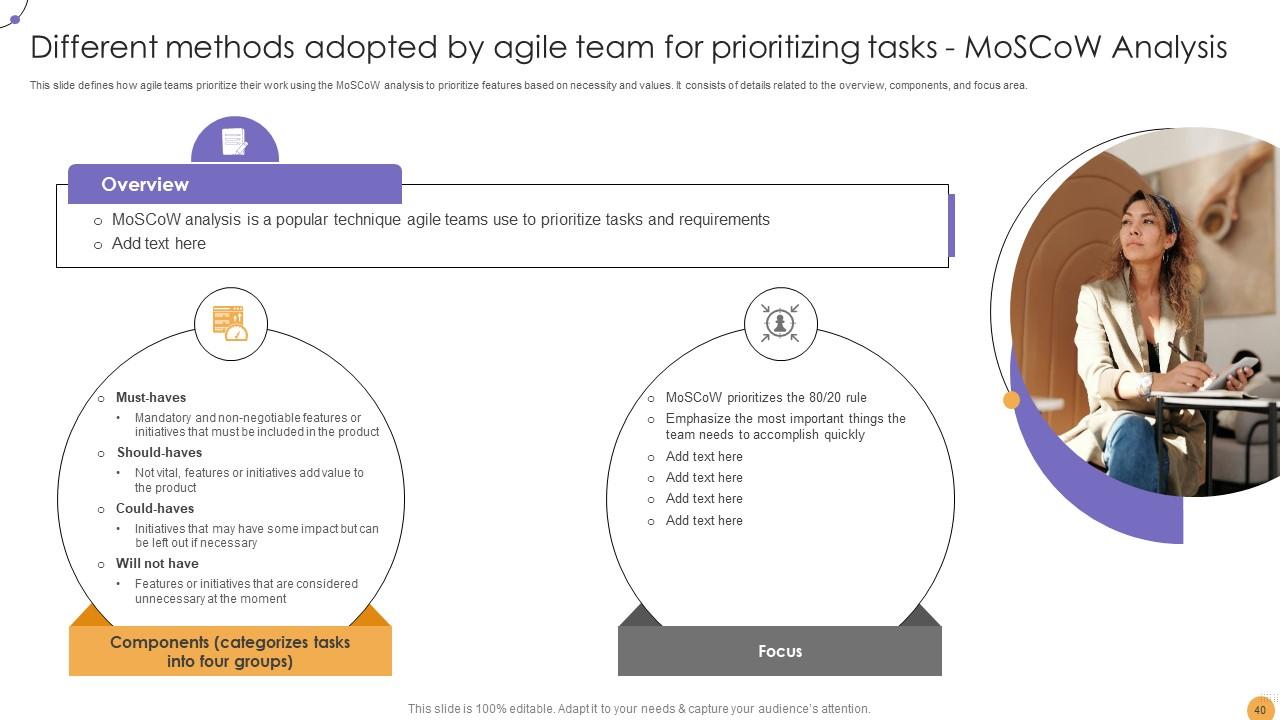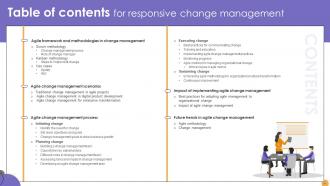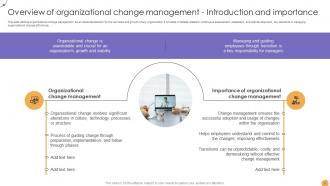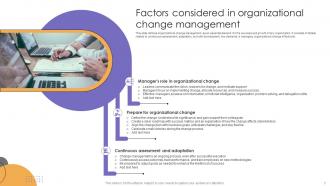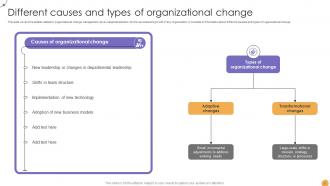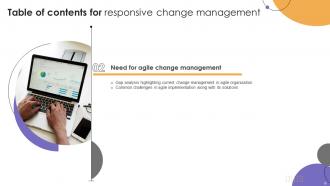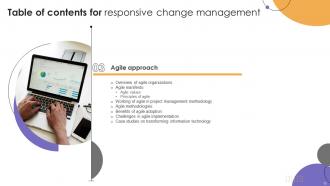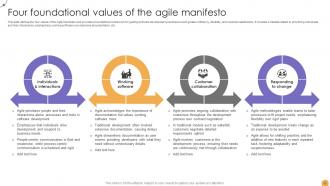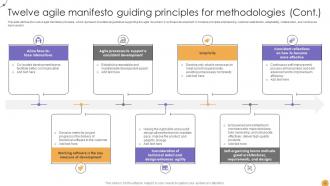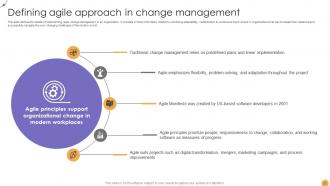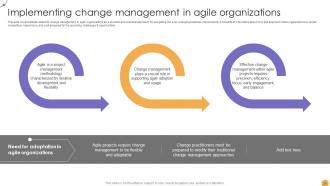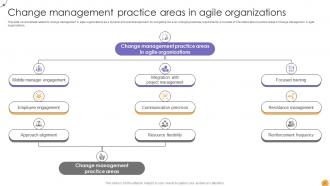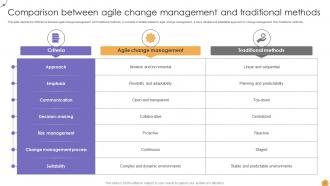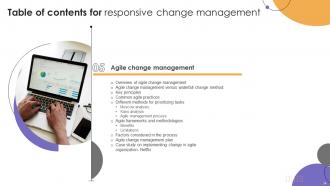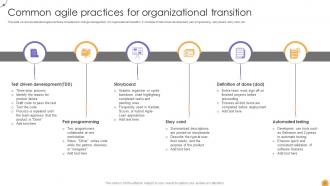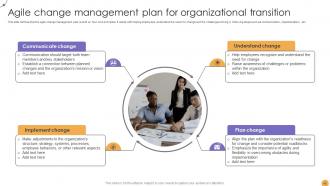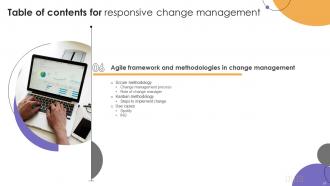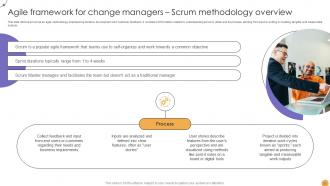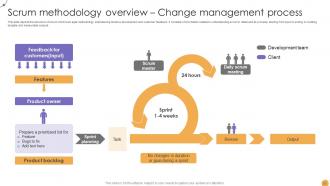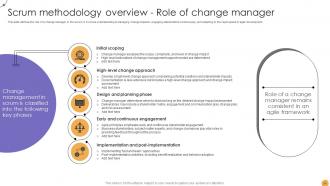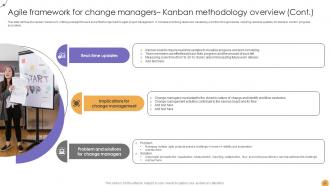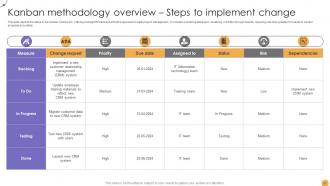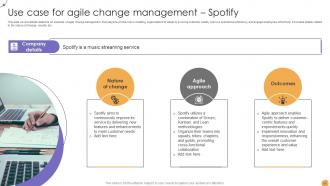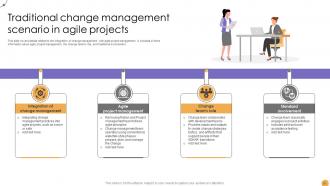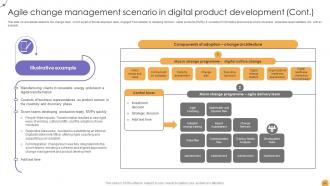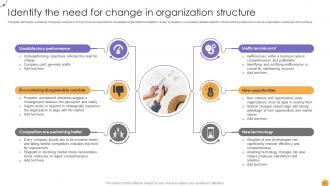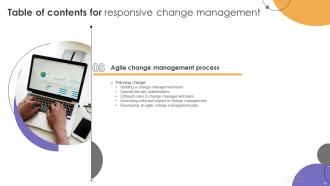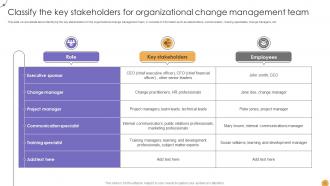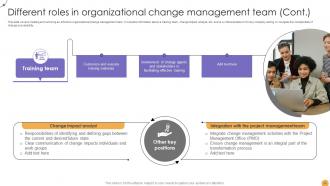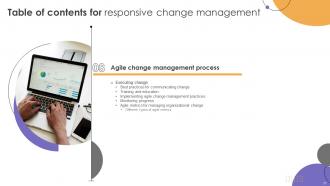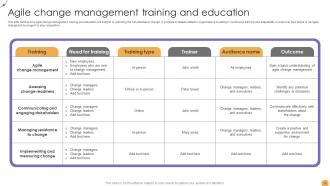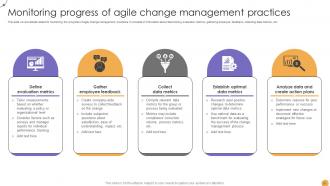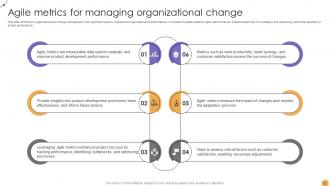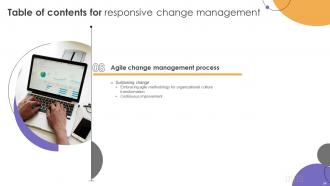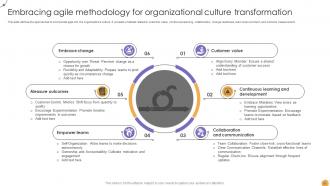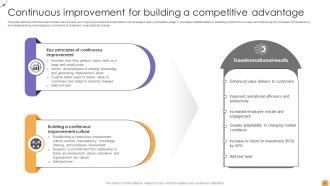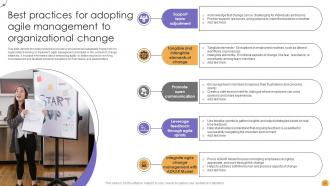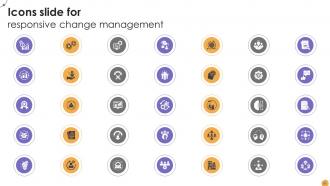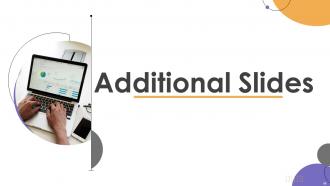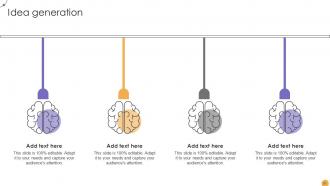Responsive Change Management Powerpoint Presentation Slides CM CD V
Our Responsive Change Management Powerpoint Presentation Slides CM CD V are topically designed to provide an attractive backdrop to any subject. Use them to look like a presentation pro.
You must be logged in to download this presentation.
PowerPoint presentation slides
Deliver this complete deck to your team members and other collaborators. Encompassed with stylized slides presenting various concepts, this Responsive Change Management Powerpoint Presentation Slides CM CD V is the best tool you can utilize. Personalize its content and graphics to make it unique and thought-provoking. All the one hundred one slides are editable and modifiable, so feel free to adjust them to your business setting. The font, color, and other components also come in an editable format making this PPT design the best choice for your next presentation. So, download now.
People who downloaded this PowerPoint presentation also viewed the following :
Content of this Powerpoint Presentation
Slide 1: This slide introduces Responsive Change Management. State your company name and begin.
Slide 2: This is an Agenda slide. State your agendas here.
Slide 3: This slide shows Table of Content for the presentation.
Slide 4: This slide continues showing Table of Content for the presentation.
Slide 5: This slide shows title for topics that are to be covered next in the template.
Slide 6: This slide defines organizational change management as an essential element for the success and growth of any organization.
Slide 7: This slide defines organizational change management as an essential element for the success and growth of any organization.
Slide 8: This slide covers the details related to organizational change management as an essential element for the success and growth of any organization.
Slide 9: This slide defines why organizational change management is important. It consists of details related to organizational change management.
Slide 10: This slide shows title for topics that are to be covered next in the template.
Slide 11: This slide represents the gap analysis to help organizations understand the gaps so that they could build effective strategies to eliminate these gaps and achieve desired results.
Slide 12: This slide covers details related to different challenges in agile implementation. it includes information about overcoming these challenges to ensure a successful agile transformation.
Slide 13: This slide shows title for topics that are to be covered next in the template.
Slide 14: This slide defines an agile organization as flexible, customer-centric, and responsive to change.
Slide 15: This slide presents the agile manifesto that provides guiding principles for software development that prioritize collaboration, practicality, customer satisfaction etc.
Slide 16: This slide defines the four values of the Agile Manifesto and provides a foundational framework for guiding software development practices toward greater efficiency, flexibility etc.
Slide 17: This slide presents the twelve agile manifesto principles, which represent foundational guidelines supporting the agile movement in software development.
Slide 18: This slide defines the twelve agile manifesto principles, which represent foundational guidelines supporting the agile movement in software development.
Slide 19: This slide provides an overview of agile project management and its core components, emphasizing the iterative and collaborative nature of the approach.
Slide 20: This slide also provides an overview of agile project management and its core components, emphasizing the iterative and collaborative nature of the approach.
Slide 21: This slide defines different project management methodologies, which vary based on needs, project characteristics, and desired level of flexibility.
Slide 22: This slide presents different project management methodologies, which vary based on needs, project characteristics, and desired level of flexibility.
Slide 23: This slide defines the advantages of agile methodologies. It consists of details related to numerous business benefits, including faster time-to-market, adaptability etc.
Slide 24: This slide also defines the advantages of agile methodologies. It consists of details related to numerous business benefits, including faster time-to-market, adaptability etc.
Slide 25: This slide covers details related to a case study on a company implementing changes in its IT (Information technology) department.
Slide 26: This slide shows title for topics that are to be covered next in the template.
Slide 27: This slide defines the details of implementing agile change management in an organization. It consists of more information related to prioritizing adaptability etc.
Slide 28: This slide defines the details related to implementing agile change management in an organization. It consists of information related to adapting to agile etc.
Slide 29: This slide covers details related to change management in agile organizations as a dynamic and practical approach for navigating the ever-changing business requirements.
Slide 30: This slide also covers details related to change management in agile organizations as a dynamic and practical approach for navigating the ever-changing business requirements.
Slide 31: This slide covers details related to change management in agile organizations as a dynamic and practical approach for navigating the ever-changing business requirements.
Slide 32: This slide covers details related to integrating change management and agile. It contains information about different roles in structuring change for change management and agile integration.
Slide 33: This slide depicts the difference between agile change management and traditional methods. It consists of details related to agile change management.
Slide 34: This slide shows title for topics that are to be covered next in the template.
Slide 35: This slide defines that agile change management promotes an organization-wide mindset of adaptability, customer-centricity, and collaboration.
Slide 36: This slide depicts the comparison between agile change management and the waterfall change method.
Slide 37: This slide presents the agile principles from the agile manifesto that can be applied to change management.
Slide 38: This slide covers six standard agile practices considered in change management for organizational transition.
Slide 39: This slide defines how agile teams prioritize their work using techniques like MoSCoW and Kano analysis to categorize tasks based on importance and customer preferences.
Slide 40: This slide showcases how agile teams prioritize their work using the MoSCoW analysis to prioritize features based on necessity and values.
Slide 41: This slide defines how agile teams prioritize their work using the Kano analysis focusing on customer preferences, categorizing features as delighters, satisfiers etc.
Slide 42: This slide defines the agile management process that emphasizes collaboration, regular reviews, and retrospectives to ensure goal alignment.
Slide 43: This slide covers information about different agile frameworks that offer flexibility for teams.
Slide 44: This slide presents information about different agile frameworks that offer flexibility for teams.
Slide 45: This slide defines the advantages of an agile approach to organizational change. It consists of details related to how agile leads to satisfied clients, a healthier work environment etc.
Slide 46: This slide defines the disadvantages of agile approaches. It highlights potential challenges such as organizational confusion, documentation concerns etc.
Slide 47: This slide covers the details related to the agile change management process. It encourages organizations to prioritize what matters most based on the latest information etc.
Slide 48: This slide defines that the agile change management plan is built on four core principles.
Slide 49: This slide defines the challenges of implementing agile change management in an organization. It consists of addressing resistance, investing in education and training etc.
Slide 50: This slide defines Netflix's change management success story that showcases how a company can adapt to changing circumstances and customer needs.
Slide 51: This slide shows title for topics that are to be covered next in the template.
Slide 52: This slide defines scrum as an agile methodology emphasizing iterative development and customer feedback.
Slide 53: This slide depicts the structure of scrum which is an agile methodology emphasizing iterative development and customer feedback.
Slide 54: This slide displays the role of a change manager in the scrum. It involves understanding & managing change impacts, engaging stakeholders continuously etc.
Slide 55: This slide defines the kanban framework, offering a straightforward and effective approach to agile project management.
Slide 56: This slide presents the kanban framework, offering a straightforward and effective approach to agile project management.
Slide 57: This slide depicts the steps in the kanban framework, offering a straightforward and effective approach to agile project management.
Slide 58: This slide covers details related to an example of agile change management that played a pivotal role in enabling organizations to adapt to evolving customer needs.
Slide 59: This slide presents details related to a case study on agile change management that played a pivotal role in enabling organizations to adapt to evolving customer needs.
Slide 60: This slide shows title for topics that are to be covered next in the template.
Slide 61: This slide covers details related to the integration of change management with agile project management.
Slide 62: This slide displays details related to the integration of change management with agile project management.
Slide 63: This slide covers details related to the change team, which is part of the development team, engaged from ideation to releasing minimum viable products (MVPs).
Slide 64: This slide presents details related to the change team, which is part of the development team, engaged from ideation to releasing minimum viable products (MVPs).
Slide 65: This slide covers the details related to the organizations with ambitious goals (e.g., modernizing IT operations) that adopt scaled Agile for enterprise transformations.
Slide 66: This slide shows title for topics that are to be covered next in the template.
Slide 67: This slide defines the constantly changing world and evolving consumer expectations necessitate organizations to adapt to remain competitive.
Slide 68: This slide defines how effective goal setting is for change initiatives. It includes details about ensuring clarity, specificity, and alignment.
Slide 69: This slide defines change management as a powerful driver of business growth when organizations set clear goals, streamline required changes, promote innovation etc.
Slide 70: This slide shows title for topics that are to be covered next in the template.
Slide 71: This slide covers details about constructing an effective organizational change management team as a strategic investment that can drive a business towards its desired objectives.
Slide 72: This slide displays details about Identifying the key stakeholders for the organizational change management team.
Slide 73: This slide covers creating and nurturing an effective organizational change management team. It includes information about an executive sponsor, change agents, communication team etc.
Slide 74: This slide covers creating and nurturing an effective organizational change management team. It includes information about a training team, change impact analyst, etc.
Slide 75: This slide defines that effective change management is crucial for organizations to adapt to evolving circumstances, foster innovation, and drive business growth.
Slide 76: This slide defines that creating an agile change management plan is essential for organizations looking to succeed in a rapidly changing world.
Slide 77: This slide shows title for topics that are to be covered next in the template.
Slide 78: This slide defines how effectively communicating change to different stakeholders is critical for the success of any organizational change initiative.
Slide 79: This slide presents how agile change management training and education are integral to unlocking the full potential of change.
Slide 80: This slide defines the rapidly changing business environment and best practices for adopting agile change management.
Slide 81: This slide covers details related to monitoring the progress of agile change management practices.
Slide 82: This slide defines how agile metrics and change management hold significant value in projects and organizational transformations.
Slide 83: This slide defines how agile metrics and change management hold significant value in projects and organizational transformations.
Slide 84: This slide shows title for topics that are to be covered next in the template.
Slide 85: This slide defines the approaches to incorporate agile into the organization's culture. It consists of details related to customer value, continuous learning, collaboration etc.
Slide 86: This slide presents continuous improvement as a dynamic and ongoing process that organizations can leverage to gain a competitive edge.
Slide 87: This slide defines the examples of continuous improvement in action. It consists of details related to fostering a culture of innovation and embracing the principles of transparency etc.
Slide 88: This slide shows title for topics that are to be covered next in the template.
Slide 89: This slide defines the best practices to provide a structured and adaptable framework for organizations looking to implement agile management principles.
Slide 90: This slide depicts details related to adopting agile change management practices that can create a more resilient and growth-oriented organization.
Slide 91: This slide shows title for topics that are to be covered next in the template.
Slide 92: This slide covers the details related to the agile methodology that continues to evolve and adapt to meet the changing needs of organizations.
Slide 93: This slide displays the details related to the need for organizations to embrace change, leverage technology, and create a culture that encourages adaptation.
Slide 94: This slide covers the details related to the need for organizations to embrace change, leverage technology, and create a culture that encourages adaptation.
Slide 95: This slide shows all the icons included in the presentation.
Slide 96: This slide is titled as Additional Slides for moving forward.
Slide 97: This is an Idea Generation slide to state a new idea or highlight information, specifications etc.
Slide 98: This slide shows Post It Notes for reminders and deadlines. Post your important notes here.
Slide 99: This slide contains Puzzle with related icons and text.
Slide 100: This slide depicts Venn diagram with text boxes.
Slide 101: This is a Thank You slide with address, contact numbers and email address.
Responsive Change Management Powerpoint Presentation Slides CM CD V with all 110 slides:
Use our Responsive Change Management Powerpoint Presentation Slides CM CD V to effectively help you save your valuable time. They are readymade to fit into any presentation structure.
-
I have just started downloading templates for my presentations and I must say this is a great design. It helped accelerate my presentation design process and made it more visually appealing.
-
I can say with full confidence that all your business, academic, or professional work requirements will be sufficed with SlideTeam. Their gallery is as rich as 2Million+!!









































